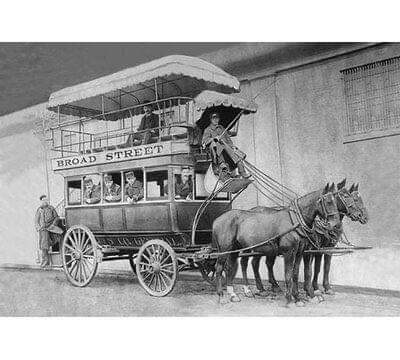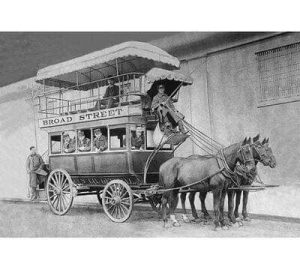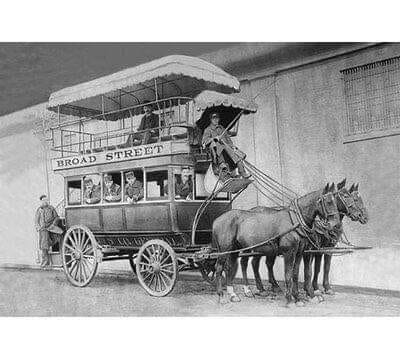
Photo: Horse-Bus Philadelphia, PA. (circa late 1800s to early 1900s)

Before the advent of motor vehicles, the horse bus, or horse-drawn omnibus, played a significant role in passenger transportation in the United States during the late 19th century, particularly within urban areas. These horse-drawn vehicles were substantial, enclosed, and equipped with springs for a smoother ride. They served as a common mode of transportation within cities of that era.
In a typical horse bus configuration, passengers sat on two wooden benches positioned along the sides of the cabin, facing one another. Meanwhile, the driver occupied a separate bench at the front facing outward. This setup clearly separated the driver and the passengers inside the enclosed cabin. During the heyday of horse buses, many of these vehicles were double-deckers, featuring an open upper deck where passengers could sit on longitudinal benches arranged back to back.
Beyond city transport, similar, albeit smaller, horse-drawn vehicles found use at country houses and by select hotels and railway companies. These smaller vehicles were designed to transport servants and luggage to and from the railway station. Often referred to as ‘private omnibuses’ or ‘station buses,’ these carriages were typically driven by a coachman and accommodated four to six passengers inside, with additional space for luggage and sometimes extra seating on the roof. Their popularity was particularly pronounced from 1870 to 1900.
An additional type of horse-drawn carriage with seating resembling that of a horse bus, albeit on a smaller scale, was known as a wagonette. This vehicle could be either open or have a top, offering a practical means of transportation in various settings.



